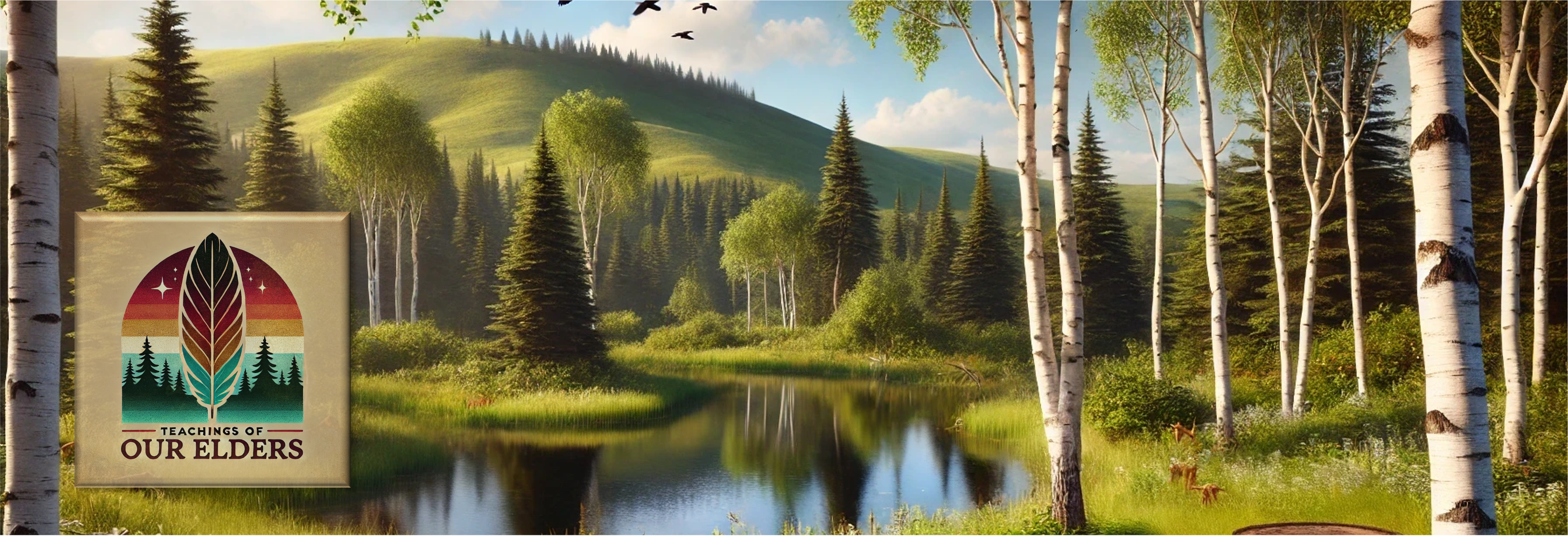| Inquiry Design Model (IDM) Blueprint™ |
| “Ojibway Legend of the Rainbow” |
| NDNAEU 1 “Sacred Relatives”, NDNAEU 2 “Learning & Storytelling”, NDNAEU 7 “Native Identity” |
| Compelling Question | What do rainbows mean? |
| Standards and Practices | RL.1 Ask and answer questions about key/supporting details in a text before, during, and after reading. RL3.1 Describe characters, settings, and major events in a story, using key/supporting details. RL.4 Ask and answer questions about words with unknown meanings, in a story or poem. RL.7 Use illustrations and details in a story to describe its characters, setting, or events. W.2 Write informative/explanatory texts. a. Name a topic. b. Supply some facts about the topic. c. Provide some sense of closure. SL.1 Participate in collaborative conversations with diverse partners, peers and adults in small and larger groups. SL.2 Recount or describe the main idea and key/supporting details from a text read aloud or information presented orally or through media. SL.3 Ask and answer questions about what a speaker says in order to clarify comprehension, gather additional information, or deepen understanding of a topic or issue. SL.4 Tell a story or recount an experience with appropriate facts and relevance, descriptive details, speaking audibly in coherent sentences |
| Staging the Question | How can things mean something to you and something different to someone else. |
| Supporting Question 1 | Supporting Question 2 | Supporting Question 3 |
| What is a rainbow and what does it mean? | What makes rainbows special to Ojibway people? | What makes me special like a rainbow? |
| Formative Performance Task | Formative Performance Task | Formative Performance Task |
| Students will: • Draw/color a rainbow As they are working, Teacher will read (help students understand) NDS Part 3, Tribes, Section 4: Chippewa • In small groups students will share what their rainbow means to them. • In large group take turns telling different meanings the rainbows have and sharing their drawings • Watch video, Our Culture Includes Everything | Students will: • Hang their drawings up • Review what they heard about Ojibway • Talk about where Turtle Mountain is and look at map from ) NDS Part 3, Tribes, Section 4: Chippewa • Watch The Rainbow Story • Discuss what happened in the story…who are the characters, where does it take place, what important events happened? • Discuss how each flower represents something special | Students will: • Watch The Rainbow Story again • Think of something special about themselves like each flower is special. • Write a sentence about what makes them special. • Share their sentence with a partner, asking for feedback of something else they could add to their sentence. • Watch video The Importance of Knowing Who You Are |
| Featured Sources | Featured Sources | Featured Sources |
| Reading https://www.ndstudies.gov/gr4/american-indians-north-dakota/section-4-chippewa Video: https://teachingsofourelders.org/our-culture-includes-everything-with-alex-decoteau/ | Video: https://www.youtube.com/watch?v=QWGs3lpvmAg&feature=youtu.be | Video: https://www.youtube.com/watch?v=QWGs3lpvmAg&feature=youtu.be https://www.youtube.com/watch?v=VPcifdaIy-w&feature=youtu.be |
| SUMMATIVE PERFORMANCE TASK: Supported Claim (written/spoken) or Demonstration of Process (project-based) | Have students share their sentences out loud to their peers. Play soft music in the background as each student shares the thing that makes them special. Have a group discussion about what was shared at the end. Students can add things that they see in each other. |
| SUMMATIVE PERFORMANCE TASK: Extension | Compile a book of the sentences written by the students that they can read in the classroom. Have them illustrate their sentences. |
| Taking Informed Action / Real World Application | Ask students how it feels when someone acknowledges something special in them. Ask if they think they could help someone else notice something they do well or are good at. Challenge students to notice something good in another person in the school and seek them out to share it with them. |

